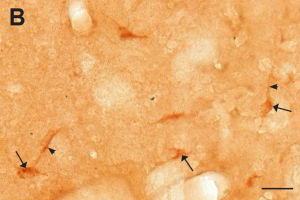Test:TestLJK
NeSys is a computational neuroanatomy and neuroinformatics laboratory. We aim at producing new neuroinformatics capabilities, as well as knowledge about design principles of large scale brain circuits, including circuit reorganization in disease models.
The laboratory develops database applications for image data, methods for computerized data acquisition, 3-D reconstruction, visualization and quantitative analyses of large neuronal populations and brain regions in the mammalian brain. The methods are employed to investigatethe architecture of large projection systems in the mammalian brain, as well as to study whole brain distribution patterns for gene, molecular,and circuit level data.
The laboratory employs stereotaxic surgery, electrophysiology, axonal tracing, general histology, immunocytochemistry, large scale microscopy image acquisition, shared tools for visualization and analyses, and shared online database applications. Project collaborations also include the use of high-resolution magnetic resonance imaging and positron emission tomography.
Several investigations are conducted in collaboration with leading laboratories in Europe and the U.S.A. The NeSys laboratory also has an experimental division performing experiments on rat and mouse models.

Welcome to the Neurotransporter Atlas showing the location of vesicular glutamate transporter 3 (VGLUT3) in the rat brain.
The VGLUT3-atlas provides online access to high resolution images revealing the distribution of vesicular glutamate transporter 3 (VGLUT3) in the normal rodent brain. The present Virtual Microscope viewing tool allows the user to navigate within and across sagittal section images. The atlas is based on data published by Stensrud et al. 2013 (J Comp Neurol, 521:3042-56).
VGLUT3 labeling as visible in high-magnification images
| http://cmbn-navigator.uio.no/neurotransporter_atlas_vglut3/img/FigureA.png | http://cmbn-navigator.uio.no/neurotransporter_atlas_vglut3/img/FigureB.png |
| A: Punctuate dark-brown labeling representing VGLUT3-positive nerve endings in the pyramidal layer of the hippocampus. Scale bar, 50 µm. | B: VGLUT3 stained neuronal cell bodies (arrows) and processes (arrowheads) in the striatum. Scale bar, 50 µm. |
Experimental procedures
The images represent sections of one male Wistar rat (8 weeks). The sections were cut on a freeze microtome and labeled with antibodies against VGLUT3 (0,17µg/ml, polyclonal rabbit antibody, catalog number 135 203, Synaptic Systems) according to a standard protocol for light microscopic immunoperoxidase cytochemistry (Gundersen et al. J Neurosci, 18:6059-6070, 1998).
Atlas coordinate values
Positional coordinates representing distance from Bregma are indicated for each image in the repository. Values were estimated by matching by evaluation of multiple anatomical landmarks in comparison to a standard rat brain atlas (Paxinos and Watson, The Rat Brain in Stereotaxic Coordinates, Elsevier Academic Press, 2007).
Data sharing:
Re-use of data from this repository is permitted provided reference is made to the following publication: Stensrud et al. J Comp Neurol, 521:3042-56, 2013. doi: 10.1002/cne.23331.'
Hello! This is a test.
My name is....
First name : Lisa
Last name: Kjønigsen
